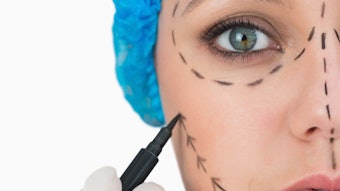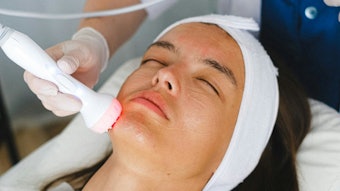
Last July, a Texas woman received an IV infusion at a local medical spa, a therapy for unclear purposes. Soon thereafter, she had a tightness in her chest, trouble breathing and passed out. Taken to a hospital, she almost immediately died of cardiac arrest, despite CPR efforts. The autopsy didn’t find IV therapy caused her death, though the solution administered wouldn’t be expected in a medspa setting. It was administered by a non-medically licensed medspa employee with no physician present at the establishment. No criminal liability was assessed, though the state medical board suspended the medical director’s license. This highlights the risks medspa businesses face, especially as they grow. Here's what professionals should know.
The Downside & Risks of Big Growth
The tragedy was an extreme example of the range of risks in an industry that’s riding a huge wave of enthusiasm for health, wellness and extended youthfulness, too. Responding with services spanning massages, facials and neurotoxin treatments to IV hydration and fat-burning injections, medspas have become a $15 billion industry. Average annual med spa revenues in 2023 hit $1,398,833, up from $1,307,587 in 2022.
Between rapid growth and spotty oversight of a business mainly regulated at the state level, the risks are on the rise. New and continuing medspa operators should be aware of them and make risk management a top priority, especially in the face of intensifying scrutiny.
The U.S. Food and Drug Administration, for example, has warned against unlicensed medspas using unlicensed, non-medical staff for treatments, and about some treatment practices themselves, such as mixing products without sterilization and using unapproved fat-dissolving ingredients.
Given this environment, the right insurance broker with extensive expertise in the medspa arena and similar businesses will be invaluable. This is the kind of assistance that will help operators identify and manage new and emerging risks, and design optimal insurance coverage against exposures. That should be a top priority in a time of nuclear verdicts.
Top 5 Medspa Risks & How to Manage Them
Given the number of risks in a medical spa business, operators are well-advised to break them down into manageable categories and priorities according to their particular circumstances. Avoid getting overwhelmed by the challenge. Reviewing and gathering patient medical history is vital toensure safety and prevent treatment complications.Image by Rawpixel.com
Reviewing and gathering patient medical history is vital toensure safety and prevent treatment complications.Image by Rawpixel.com
1. Patient Safety
This is a top risk and an essential medspa success factor. The most in-demand treatments often involve medical procedures with serious consequences if not performed correctly. With neurotoxin treatments, it’s possible to hit a nerve. With laser procedures come burn risks. Unsanitary equipment and allergic reactions are also risks.
How to Manage the Risk:
- Staff training: Comprehensive onboarding, staff training and certification programs are must-have investments for maintaining a safe environment. Employees must be well-versed in their procedures and understand the importance of maintaining a sterile environment.
- Review patient medical history: Thorough patient consultations are necessary from the outset to gather detailed medical histories, including any allergies or previous adverse reactions to treatments. They also should be referred to regularly and checked for potential changes.
- Standardized protocols: Standardized protocols should be developed and documented for all procedures, with checklists mandated so that every step is followed correctly and consistently.
2. Regulatory Compliance
Medspas must adhere to many federal and state regulations, which can be complex and frequently updated. Non-compliance with federal rules on patient privacy, safety standards or state requirements for ownership or licensing can result in fines, legal action and even closure of the facility.
How to Manage the Risks:
- Stay informed: Regularly update your knowledge of local, state and federal regulations for medspas, including licensing requirements, treatment protocols and billing practices.
- Legal partnerships: Newcomers to the business may balk at a business attorney’s fees, but a legal error can be far more costly. Look for healthcare attorneys with an understanding of medspa regulations for valuable guidance in case of a claim.
- Internal audits: Regulatory breaches can be avoided by being proactive and by conducting regular internal audits to identify and quickly address any compliance issues.
3. Employee Risk
Employees are crucial to helping a medspa grow, but they also represent a significant risk. This includes risks of hiring unqualified staff, mishandling patient information and harassment. A high priority should be ensuring patient information is handled with high integrity.
How to Manage the Risks:
- Background checks: Background checks during the hiring process are mandatory, to ensure employees are qualified, present a complete/accurate work history, have proper credentials and demonstrate a history of integrity.
- Track licensure expiration: Employees’ licenses always must be up to date, especially as the medspa grows.
- Cyber security training: Provide ongoing security training to staff to ensure the safe handling of patient information and prevent data breaches.
4. Treatment Risk
The medspa industry continuously introduces new and innovative treatments. But these can pose risks if not performed correctly or if they have unforeseen side effects.
How to Manage the Risks:
- Certifications and training: All staff members should receive proper training (including hands-on) and certification for new treatments.
- Monitoring outcomes: Treatment outcomes should be monitored regularly with detailed records maintained. Recurring issues must be identified and practices adjusted accordingly.
5. Unreasonable Patient Expectations
Patients often have high expectations for aesthetic treatments. If they’re not met, it can lead to dissatisfaction, negative reviews and even legal action.
How to Manage the Risks:
- Set realistic expectations: Take the time during initial consultations to explain what each treatment can and cannot achieve.
- Patient communication: Clearly communicate potential risks and side effects before administering treatments. Use informed consent forms to document that patients understand and accept these risks.
- Follow-up care: Recommend follow-up appointments to assess results and address any concerns. It’s also a good way to improve patient satisfaction and loyalty.
It’s almost impossible to create a risk-free environment for any business, medical spas included. By being aware of and ready for potential issues, operators will be in a positive position for success.
______________
 Courtesy of Brittney Stinnett
Courtesy of Brittney Stinnett
Brittney holds a bachelor’s degree in nursing, and a master’s degree in human development and leadership from Murray State University. She uses her educational and clinical experiences to leverage better outcomes for her clients in the healthcare industry. She was named one of the insurance industry’s "Rising Stars 2021" by Insurance Business America, and 2025 Big I KY Insurance Association Emerging Leader Chair.
Brittney’s talent lies in the deep, technical knowledge of the products she represents, and a heart for helping business owners/leaders succeed. Brittney’s network within the insurance industry allows her to assemble strategic resources, perfectly tailored to her clients’ unique needs.












